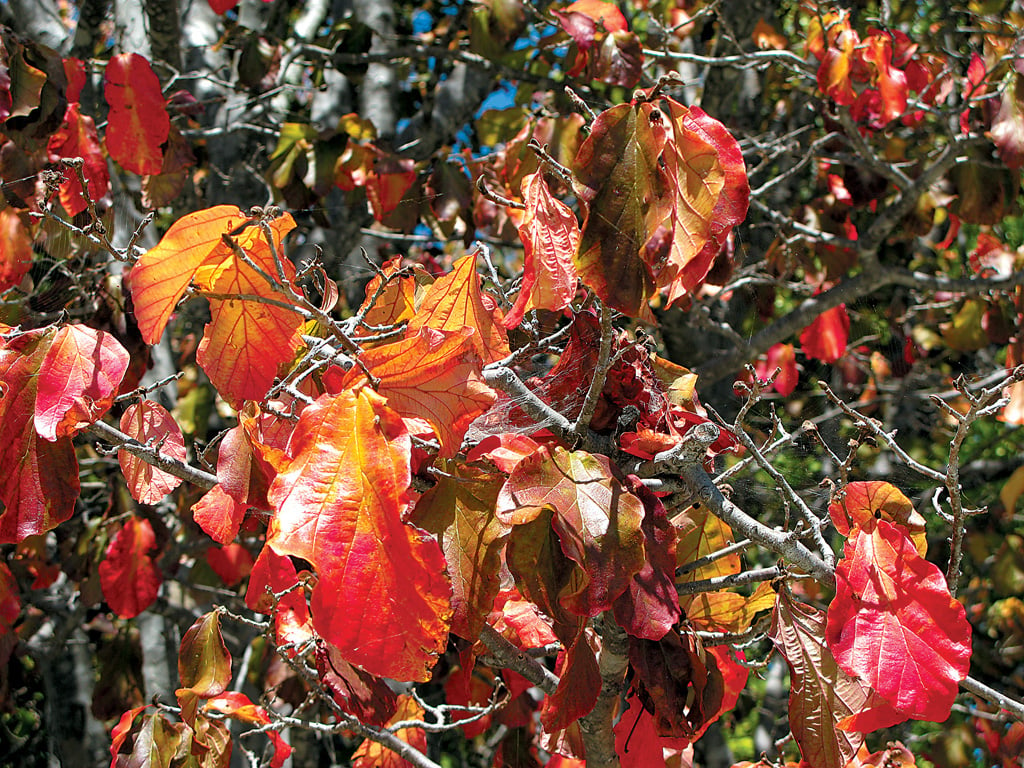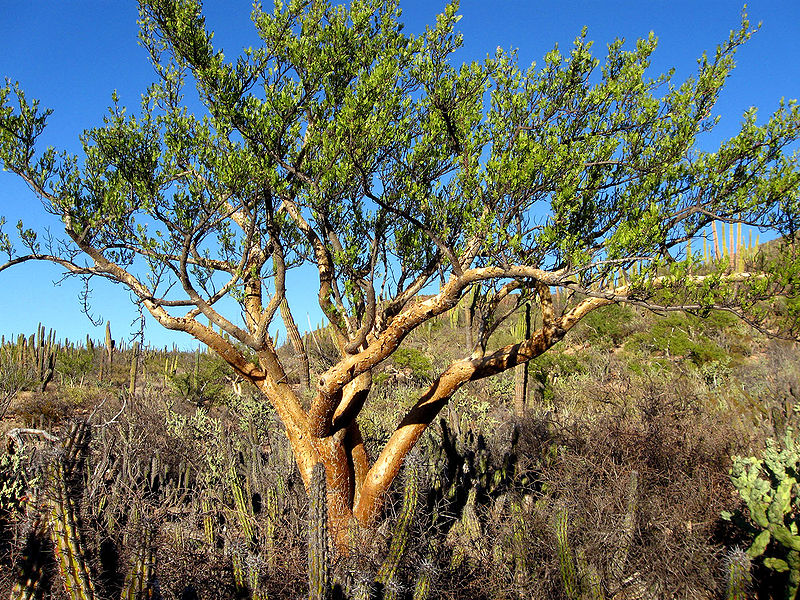

Contributor
- Topics: Archive, Plants You Need

Persian ironwood (Parrotia persica) seems exotic yet familiar, all at the same time. It has bark reminiscent of the more commonly grown Chinese elm (Ulmus parvifolia) and sycamores and plane trees (Platanus species); the luxuriant summer leaves of a beech tree (Fagus species); and a combination of brilliant fall colors evocative of smoke tree (Continus coggygria) and sweetgum (Liquidambar styraciflua). With so many worthy ornamental traits and an adaptability to a range of climate zones, Persian ironwood rewards those who choose to grow it, offering interest and beauty in every season. It should be grown more frequently in Western gardens.
Persian ironwood is a member of the witch hazel family (Hamamelidaceae), which includes familiar woody plants such as the witch hazels (Hamamelis species), the winter hazels (Corylopsis species), Fothergilla, and Chinese witch hazels (Loropetalum); the family once included the sweetgums, until they were split into the Altingiaceae. Only two species comprise the genus Parrotia, the other being P. subaequalis from China—a rare, small tree or large shrub, which was unknown to the horticultural trade until recently. The genus is not named for the colorful, mostly tropical birds, but instead for Dr Friedrich Wilhelm Parrot (1792-1841), a German naturalist and traveler who, in 1829, was the first European to climb Mount Ararat, which sits on the present-day borders of Turkey, Armenia, and Iran. Persian ironwood occurs natively only in a small region of that area, where temperate broad-leaved forests grow near the southern edge of the Caspian Sea in Northern Iran and Azerbaijan. It grows there with other notable ornamental trees, such as chestnut-leaved oak (Quercus castaneifolia), European hornbeam (Carpinus betulus), and silk tree (Albizia julibrissin).

Slow but Steady
As with many great horticultural trees, patience is required when cultivating Persian ironwood. It grows slowly, first as a multi-stemmed large shrub, then eventually as a low-branched, round-headed tree; it usually requires careful training to mature into a standard, single-trunk specimen. In cultivation, this tree can reach forty feet in height, eventually forming a short, thick trunk supporting both erect and drooping branches. The low branching form is often propagated by cuttings, possibly to assure the best fall color; trees grown from seed and those introduced from the wild supposedly have straight trunks and a columnar shape. This latter fact is attested to by the common use of the dense wood for telephone poles, bridge construction, and tool handles in Azerbaijan.
In winter, after the tree has lost its leaves, Persian ironwood’s beauty is exhibited in smooth bark that peels in scales and patches to reveal a mosaic of silver, green, and cream-colored new bark beneath. Small, petal-less flowers emerge in late winter and early spring, before the new leaves. These inconspicuous yet lovely flowers appear as bunches of blood red stamens born inside two woolly brown bracts, giving the naked branchlets a crimson haze, and inspiring their use in indoor arrangements. After flowering, new leaves emerge, coppery at first, eventually becoming dark green, satiny, and lopsided with wavy edges. As autumn approaches, the tree enters its most beautiful stage, displaying the exceptional fall color for which it is most coveted. The leaves turn from green to golden yellow, crimson, rose pink, maroon, and purple, all of which can be seen on a single tree, simultaneously.


Persian ironwood grows well in a variety of environments from Seattle to Central California (Sunset zones 2B-7, 14-17). It is pest free so far, does well in partial shade, but will produce the best fall color in full sun and well-drained rich soil. This infrequently grown species has year-round ornamental value and autumn color that rivals any species found in Western gardens.
In the face of climate change, disappearing global biodiversity, and an increasingly urban human population, striving for diversity in the tree species we chose to plant on our streets and in our parks and gardens will become ever more important. A richer, more diverse collection of trees around us is healthier (better able to avoid plagues of insects and diseases), more diverting to the eye, and more refreshing to the spirit. We can all do our part to learn more about and plant underused, undeservedly rare trees, like Persian ironwood.
Share:
Social Media
Garden Futurist Podcast
Most Popular
Videos
Topics
Related Posts

Ground Up Science for Greener Cities with Garden Futurist Dr. Alessandro Ossola
Spring 2023 Listen to the Podcast here. Alessandro Ossola is a scientist who gets very excited about the challenge of climate change allowing for an

Readying Urban Forests for Climate Realities with Garden Futurist Dr. Greg McPherson
Winter 2023 Listen to the Podcast here. “Going from the mow and blow to a more horticulturally knowledgeable approach to maintaining the landscape. And that

Welcome, Greywater, to the Garden
Summer 2022 Oh, summer: delightful warm air, tomatoes swelling on the vine, fragrant blooms on an evening stroll. When it’s warm and rainless, how is

Big Tree-Data and Big-Tree Data with Garden Futurist Matt Ritter
Summer 2022 Listen to the full Garden Futurist: Episode XV podcast here. We are in an environmental crisis right now in many parts of California










Responses